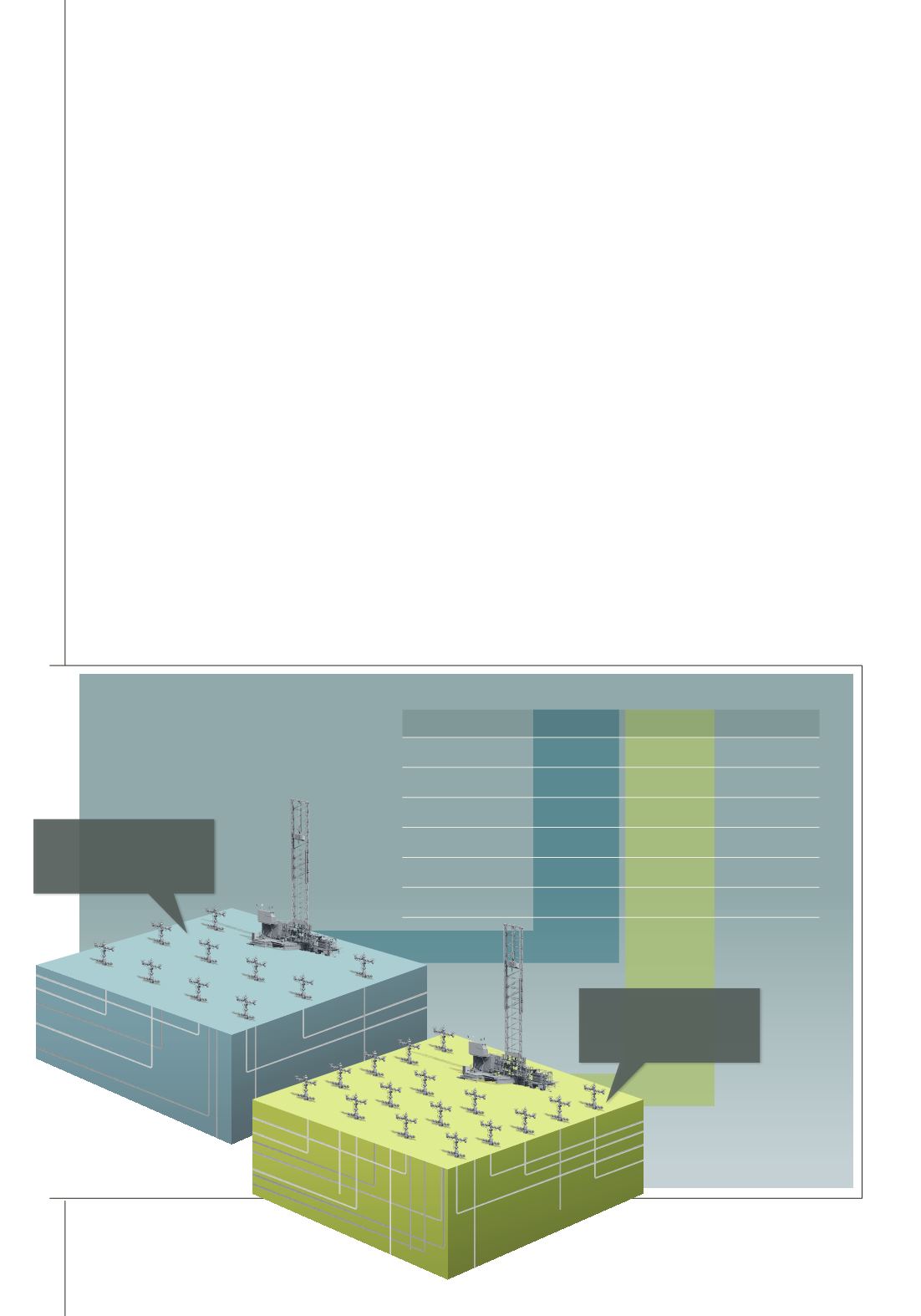

EOG Resources Maximizing
Net Present Value (NPV)
of the Eagle Ford
WELLS PER SECTION 10 WELLS 16 WELLS DIFFERENCE
Reserves/Well 450 MMBoe 400 MMBoe
Reserves/640 Acres 4.5 MMBoe 6.4 MMBoe
+1.9 MMBoe
Recovery Factor
= 6%
= 8%
+ 2% Recovery
CWC/Well
$6 MM $6 MM
Direct ATOR/Well
130%
100%
NPV10/640 Acres $69 MM $98 MM
+$29 MM NVP
Source: EOG Resources / March 2013 Investor Presentation
PREVIOUS 640 ACRES
10 WELLS PER SECTION
(65 AC./WELL)
CURRENT 640 ACRES
16 WELLS PER SECTION
(40 AC./WELL)
personnel safety and pipeline integrity, which can
be particularly troublesome given the high paraffin
content of Eagle Ford crude.
But even despite today’s lower oil prices, Zellou
sees new opportunity emerging in the Eagle Ford.
That’s especially so, he says, because current drilling
economics favor wet gas.
As he explains, in the past, on an energy content
basis, natural gas and crude oil were priced at parity.
“Now, even with the drop in crude oil prices
to around US$50 per barrel and natural gas at
around US$3 per million BTU, natural gas is
priced at about half of crude oil on an energy
content basis,” he says. In other words, for the
equivalent amount of energy, natural gas priced
at US$3 per MMBTU is equal to about US$17
to US$20 per barrel of oil. Granted, that’s
considerably less than the US$50 or so that oil
was trading at in January, but the gap is certainly
smaller than when oil was US$100 per barrel.
What this means, Zellou says, is that there’s
product and cash flow in the Eagle Ford.
Still, Eagle Ford operators admit that because
the region is highly variable, with wells in the same
field performing differently, it can be difficult to
generalize break-even costs. And no one seems
comfortable betting on how low oil prices would
have to fall before production starts to level off, or
even decline.
Condensates on the Move: Incentives
for Removing Wet Gas Liquids
Abdel Zellou, Ph.D., a U.S. midstream and
gathering market expert with global pipeline
services provider T.D. Williamson (TDW), has
spent considerable time over the past several years
examining productivity nuances in the Eagle Ford
region. As such, he understands the pressures that
operators there are dealing with. Chief among
them, he feels, are low recovery and high decline
rates compared to conventional wells and the need
to control operating expenses, while still assuring
18



















